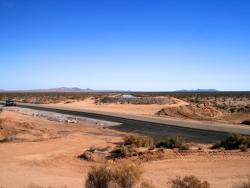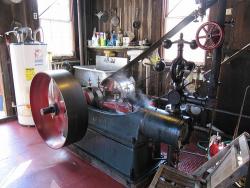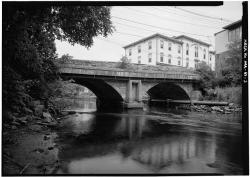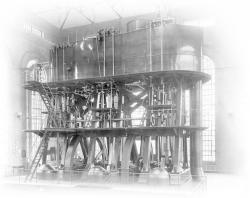Stretching 242 miles from the Colorado River on the California-Arizona border to its final holding reservoir near Riverside, California, the Colorado River Aqueduct consists of more than 90 miles of tunnels, nearly 55 miles of cut-and-cover conduit, almost 30 miles of siphons, and five pumping stations. Supplying approximately 1.2 million acre-feet of water a year - more than a billion gallons a day - it helped make possible the phenomenal growth of Los Angeles, San Diego, and surrounding Southern California areas in the second half of the 20th century.
USA

Parker DamState: CACountry: USAWebsite: http://www.asce.org/Project/Colorado-River-Aqueduct/Creator: Weymouth, Frank E.

Wisconsin Historical SocietyImage Caption: East Wells Onieda Street Power PlantEra_date_from: 1918


Constructed on 1,040 acres just 10 miles southwest of the city center, the Cleveland Hopkins Airport was the first major airport in the world to provide an integrated system of paved landing surfaces, lighted runways, and a terminal complex consisting of hangars and operating facilities. Overseen by city manager William Hopkins and Major "Jack" Berry - an engineer on loan from the U.S. postal service who eventually became the city's first Airport Commissioner - the project at first was called "Major Berry's Folly" by local residents because of its outlying location.


The Cincinnati Observatory, founded by Ormsby MacKnight Mitchel in 1842, is America’s oldest public/professional observatory. The observatory was situated on Mt. Adams, east of the current downtown Cincinnati; the hill was named for former President John Quincy Adams when he laid the observatory’s cornerstone. In 1873 the observatory was relocated to Mt. Lookout when it became a component of the University of Cincinnati (UC). From 1870s until 1930s the stellar proper motion studies reigned as the observatory’s principal activity.

The Choate Bridge of Essex County, completed in 1764, is the oldest documented two-span masonry arch bridge in the United States. Named after Colonel John Choate, who supervised the construction, the bridge is located on South Main Street and spans the Ipswich River. Originally, the bridge measured 80 feet 6 inches long and 20 feet 6 inches wide. In 1838 it was widened to 35 feet 6 inches on the east side in order to accommodate another lane of traffic. The west side and the parapet of the bridge, along with the inscription to Colonel Choate, remained unchanged.


The Chicago, Burlington, & Quincy Railroad was the first railroad to link Chicago and the Mississippi River, in the 1850s. This forty-stall roundhouse, large even for its time, became a major center for railroad activity for the CB&Q. It served as a repair and construction facility from which more locomotives and cars than any other CB&Q installation were built. Steam engines, passenger cars, freight cars, precision parts, tools, and machines were designed and built, beginning about 1858.

At the site of the first water pumping station providing water and sewage systems to the City of Erie in 1868, the Chestnut Street Pumping Station houses one of the largest steam engines, which pumped 20 million gallons a day. The triple-expansion steam reciprocating engine, which pumped water from the filter plant to the city reservoir, was typical of those used in municipal water pumping stations throughout the country during the late nineteenth and early twentieth centuries.


